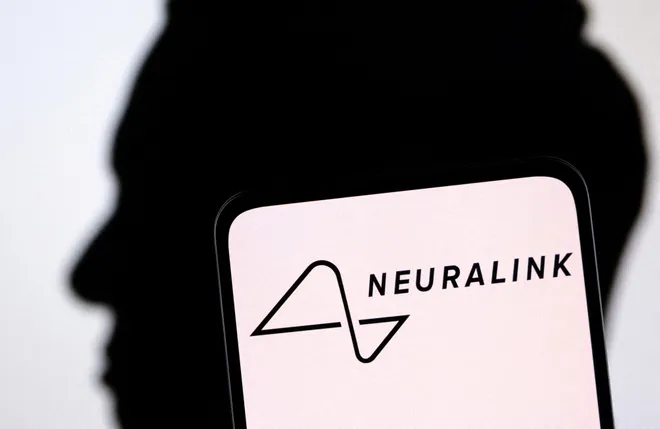Second person with spinal cord injury gets Neuralink brain chip and it's working, Musk says
Tesla and Space X founder Elon Musk recently announced that a second human has received a Neuralink cybernetic implant.
Musk, the founder of the brain-computer company, Neuralink Corp., spoke about the second successful implantation during a podcast hosted by computer scientist Lex Fridman.
“I don’t want to jinx it, but it seems to have gone extremely well with the second implant,” Musk said. “There’s a lot of signal, a lot of electrodes. It’s working very well.”
Musk called the next steps for Neuralink "gigantic," and he predicted in the coming years that the company will increase the number of electrodes dramatically and improve signal processing. Electrodes, primary components in batteries, acquire brain signals that are then routed to the electronics in the implant, "which process and wirelessly transmit the neural data to an instance of the Neuralink Application running on an external device, such as a computer."
"Our brain-computer interface is fully implantable, cosmetically invisible, and designed to let you control a computer or mobile device anywhere you go," according to Neuralink's website.
The second implantation surgery was postponed in June after the patient initially scheduled to undergo the procedure had to withdraw due to an unspecified medical condition, Bloomberg reported, citing Michael Lawton, chief executive officer of the Barrow Neurological Institute.

When was the first Neuralink implant?
Quadriplegic Noland Arbaugh was the first human to have Neuralink implanted. He had the procedure done earlier this year as part of a clinical trial.
Arbaugh, 30, told Bloomberg in May that the device has helped his life, including allowing him to play video games and chess and surf the Internet with ease. Before the surgery, Arbaugh was still reacclimating to life following a diving accident in mid-2016 that left him with a dislocated spine.
“Once you get a taste for using it, you just can’t stop," Arbaugh said about Neuralink, per Bloomberg.
Arbaugh did encounter some issues during his Neuralink experience.
“I started losing control of the cursor. I thought they’d made some changes and that was the reason," Arbaugh said, per Bloomberg. “But then they told me that the threads were getting pulled out of my brain. At first, they didn’t know how serious it would be or a ton about it."
Like Arbaugh, Musk confirmed during the podcast that the second Neuralink recipient had a spinal cord injury.
'Straightforward procedure'
Neurosurgeon Matthew MacDougall also appeared on Fridman's podcast and said the Neuralink surgery is "a really simple, straightforward procedure."
"The human part of the surgery that I do is dead simple," MacDougall said. "It’s one of the most basic neurosurgery procedures imaginable."
During the procedure, surgeons make a cut in the skin on the top of the head over the area of the brain that is the "most potent representation of hand intentions," according to MacDougall.
"If you are an expert concert pianist, this part of your brain is lighting up the entire time you’re playing," he said. "We call it the hand knob."
Even quadriplegic patients whose brains aren’t connected to their finger movements anymore still imagine finger movements and this "knob" part of the brain still lights up, the neurosurgeon said.
Once surgeons cut that skin at the top of the head, they flap it open "like kind of opening the hood of a car," make a round 1-inch diameter hole in the skull, remove that bit of the skull, open the lining of the brain and then show that part of the brain to the Neuralink robot, according to MacDougall.
"This is where the robot shines," he said. "It can come in and take these tiny, much smaller than human hair, electrodes and precisely insert them into the cortex, into the surface of the brain to a very precise depth, in a very precise spot that avoids all the blood vessels that are coating the surface of the brain. And after the robot’s done with its part, then the human comes back in and puts the implant into that hole in the skull and covers it up, screwing it down to the skull and sewing the skin back together. So the whole thing is a few hours long."
Disclaimer: The copyright of this article belongs to the original author. Reposting this article is solely for the purpose of information dissemination and does not constitute any investment advice. If there is any infringement, please contact us immediately. We will make corrections or deletions as necessary. Thank you.







